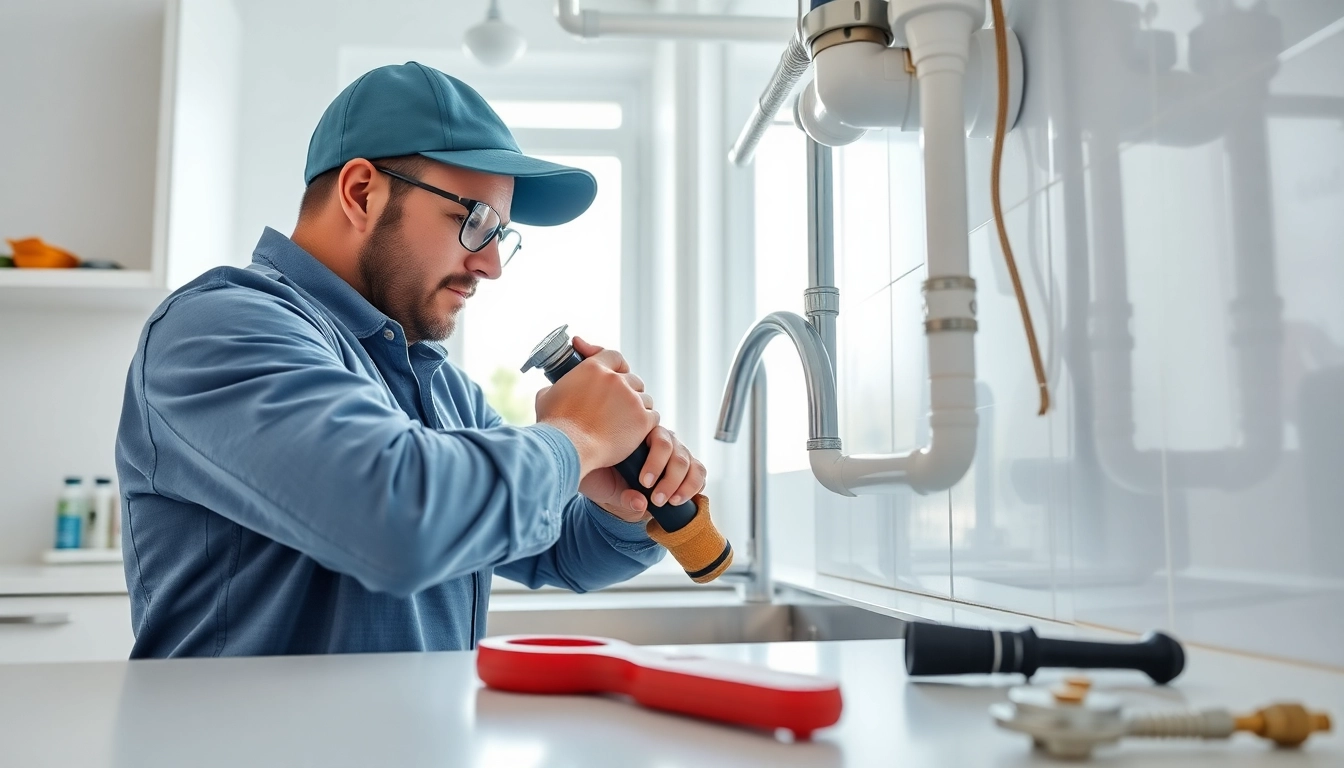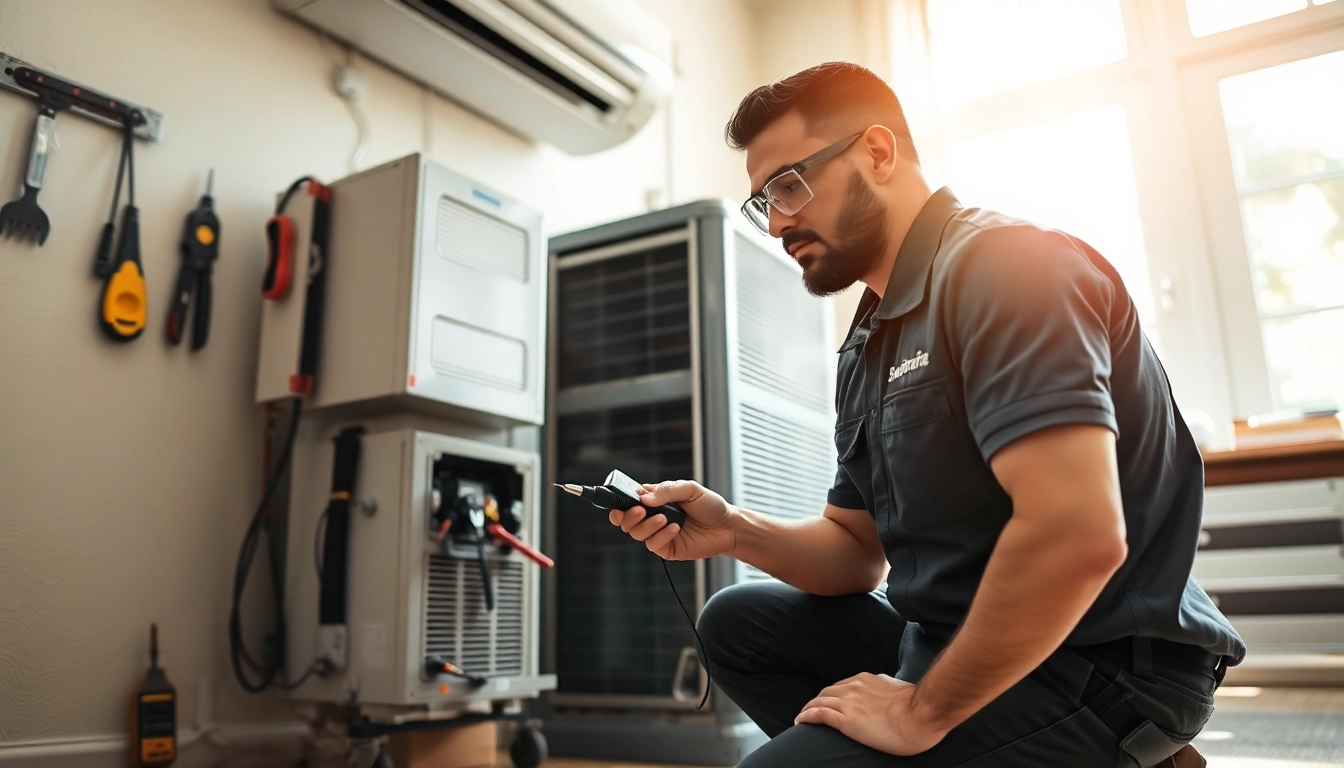Understanding Plumbing Basics
What is Plumbing?
Plumbing is a fundamental aspect of modern living, providing essential services in residential and commercial buildings. It encompasses the systems that convey fluids for various applications, including the distribution of potable water and the removal of wastewater. A well-designed plumbing system utilizes pipes, valves, fixtures, and various apparatuses to function effectively and efficiently. The importance of plumbing cannot be overstated, as it not only maintains our hygiene and health but also contributes to the overall comfort of our living spaces. For a deeper exploration of the intricacies and definitions surrounding plumbing, it is beneficial to delve into its components and terms.
Components of a Plumbing System
A plumbing system is organized into two main subsystems: the supply system and the drainage/waste system. The supply system delivers fresh water, while the drainage system is designed to carry away wastewater. Here’s a breakdown of the key components:
- Pipes: These are the arteries of any plumbing system, transporting water and sewage. They come in various materials, including copper, PVC, and PEX.
- Fittings: These connect different sections of piping and come in various sizes and bends to accommodate the layout of your plumbing.
- Fixtures: These include sinks, faucets, bathtubs, and toilets, which facilitate the use of water in a functional manner.
- Valves: Valves control the flow of water through the pipes. They can include shut-off valves, pressure relief valves, and backflow prevention devices.
- Pumps: Often essential in systems that require water to be pushed upwards, like in basements or multi-story buildings.
- Water Heaters: These appliances heat water for various uses in a home, ranging from showers to dishwashing.
Common Plumbing Terminology
Understanding plumbing terminology is crucial for homeowners and DIY enthusiasts alike. Here are some common terms you might encounter:
- DWV: Stands for Drainage, Waste, and Vent system, which is crucial for removing sewage and venting gases.
- Backflow: The undesirable reversal of flow of a liquid, gas, or suspended solid into the potable water supply.
- Trap: A U-shaped pipe that prevents sewer gases from entering the home by trapping some water inside it.
- Riser: A vertical pipe that transports water upward from the main supply to fixtures on upper floors.
Common Plumbing Issues and Solutions
Identifying Leaks and Drips
Leaks and drips can lead to significant water waste and damage over time. Identifying the source of leaks is essential for preventing costly repairs. Common signs include damp spots on walls or ceilings, the sound of running water when no tap is on, and a sudden increase in your water bill. To address leaks, start by turning off the water supply to the affected area, then inspect visible pipes for moisture or corrosion. If a leak is suspected behind walls, specialized equipment like moisture meters may be required to pinpoint the issue. Repair methods may include replacing damaged fittings, patching pipes, or using sealants for small leaks.
Addressing Clogs in Drains
Clogged drains are a frequent plumbing issue. They can happen due to the build-up of hair, soap scum, grease, and other debris. To tackle clogs, homeowners can start with simple solutions such as using a plunger or a drain snake. Chemical drain cleaners are also an option but should be used cautiously due to their potential to damage pipes. For persistent clogs, it may be necessary to disassemble parts of the plumbing to manually remove blockages or to call a professional.
Fixing Water Pressure Problems
Water pressure problems manifest as weak water flow from faucets and fixtures. There can be various causes, such as blockages in the pipes, issues with the water supply line, or problems with pressure regulators. To troubleshoot, check if all fixtures are affected; if not, the problem may be localized. Inspect faucets and aerators for mineral deposits; cleaning these may restore flow. If the issue persists across the home, it might indicate a problem with the plumbing infrastructure that requires professional evaluation.
Plumbing Tools Every Homeowner Should Have
Must-Have Basic Plumbing Tools
Having the right tools is essential for anyone looking to perform plumbing repairs. Here’s a list of basic tools that every homeowner should have:
- Pipe Wrench: Essential for gripping and turning pipes.
- Adjustable Wrench: Useful for tightening or loosening nuts and bolts.
- Plunger: A must-have for clearing clogged drains and toilets.
- Plumbing Snake: A handy tool for removing stubborn clogs in pipes.
- PVC Cutter: Ideal for cutting PVC pipes accurately.
Advanced Tools for Serious Repairs
For homeowners who want to take on more complex plumbing projects, advanced tools are necessary. Here are some recommendations:
- Hydraulic Crimping Tool: This tool is essential for joining copper tubing quickly.
- Pressure Tester: Helps in determining whether pipes are sealed correctly.
- Inspection Camera: This enables viewing of pipe interiors to diagnose issues without invasive procedures.
- Pipe Locator: Useful for detecting hidden pipes beneath floors or walls, particularly in renovations.
Organizing Your Plumbing Toolkit
Keeping your plumbing tools organized can improve efficiency during repairs. Use a sturdy toolbox or storage container to keep everything accessible. Consider including a list of inventory tools to ensure nothing is lost. Additionally, using dividers or compartments can help segregate tools for easy retrieval. Regularly review your toolkit to assess its condition and replenish supplies.
Preventive Maintenance for Your Plumbing
Regular Inspection Tips
Routine inspections are critical for the longevity of your plumbing system. Here’s how to conduct effective inspections:
- Visual Inspections: Regularly check visible pipes for leaks or corrosion.
- Monitor Water Bills: A sudden spike might indicate a leak somewhere in the system.
- Check Pressure: Use a pressure gauge to ensure that your home’s water pressure remains within normal limits.
Seasonal Plumbing Maintenance Checklist
As the seasons change, so do plumbing needs. Here’s a seasonal checklist to follow:
- Spring: Check for leaks and ensure exterior hoses are ready for use.
- Summer: Inspect sprinkler systems and outdoor faucets for proper functioning.
- Fall: Insulate pipes to prevent freezing temperatures from causing damage.
- Winter: Ensure all heating systems are properly maintained to avoid pipe bursts.
Common Mistakes to Avoid
In plumbing, certain mistakes can lead to problems down the road. Here are common pitfalls to avoid:
- Ignoring Minor Leaks: Small leaks can lead to bigger issues if not addressed promptly.
- Using Chemical Drain Cleaners Excessively: These can damage pipes over time and do not address root causes of clogs.
- Neglecting Annual Inspections: Regular checks can help catch issues before they escalate.
When to Call a Professional Plumber
Signs That Indicate Professional Help is Required
While many plumbing issues can be resolved independently, some situations necessitate the expertise of a professional. Key signs include:
- Persistent leaks or stains on walls.
- Major clogs that cannot be cleared with standard methods.
- Unusual noises from pipes or fixtures.
- Consistent low water pressure affecting multiple fixtures.
Choosing the Right Plumbing Service
Selecting a plumbing service can be daunting. To find a reliable plumber, consider the following:
- Verify Credentials: Ensure they are licensed and insured.
- Read Reviews: Check for ratings and testimonials from previous clients.
- Ask for Estimates: Obtain multiple quotes to gauge pricing and services offered.
Understanding Plumbing Service Costs
Costs for plumbing services can vary widely depending on the complexity of the job. Here are factors that influence pricing:
- Type of Service: Emergencies are typically more costly than routine maintenance.
- Location: Labor rates can differ based on geographical area.
- Material Costs: The quality and type of materials needed can add to expenses.



